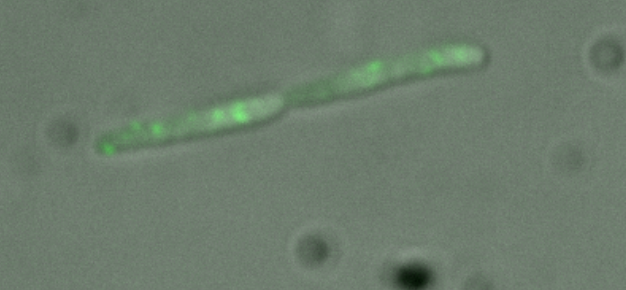Virginia Tech/observe lysis
From 2007.igem.org
BlairLyons (Talk | contribs) m |
BlairLyons (Talk | contribs) m |
||
| Line 97: | Line 97: | ||
| - | + | <html> | |
| - | + | <object width="425" height="350"> | |
| + | <param name="movie" value="http://www.youtube.com/watch?v=HibxqM_Ou0Q"/> | ||
| + | <param name="wmode" value="transparent"/> | ||
| + | <embed src="http://www.youtube.com/watch?v=HibxqM_Ou0Q" | ||
| + | type="application/x-shockwave-flash" | ||
| + | wmode="transparent" | ||
| + | width="425" | ||
| + | height="350"/> | ||
| + | </object> | ||
| + | </html> | ||
|}<html></center></html> | |}<html></center></html> | ||
Revision as of 00:19, 30 November 2007
|
|
Visualizing Phage LysisWhile initially working with λ phage, we decided to see if we could actually see the fluorescent phage using a flow cytometer and a microscope. We took the lysogens containing λ-EYFP and induced the phage to lyse using the protocol provided in the Alvarez paper. We figured that as the phage is being assembled, we would be able to see fluorescence in the cell. With this in mind, we allowed induced the cells and waited about 20 minutes before putting samples through the flow cytometer. The flow did indicate that there was fluorescence. Now that we had seen fluorescence, we wanted to know to what extent the cells would actually fluoresce. Thus, we took some of the cells that were about 15 minutes from lysing and placed them under the microscope to see how they fluoresced. As it turned out, unlike fluorescent proteins that make the majority of the cell glow, the fluorescent phage produced small spots of fluorescence where the phage particles were being formed. What was truly interesting was that as we were collecting time course data, we noticed that some of our cells were disappearing. We figured that they had moved outside of the field of reference, but after analyzing the pictures and creating a film, we actually saw the cells lysing.
|








